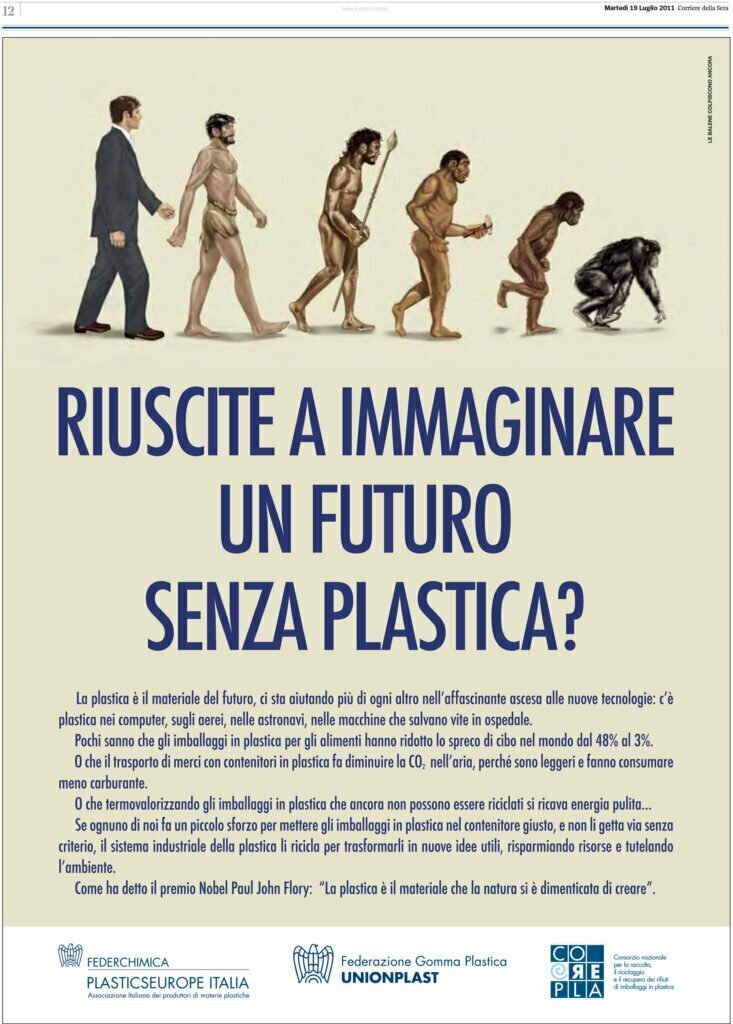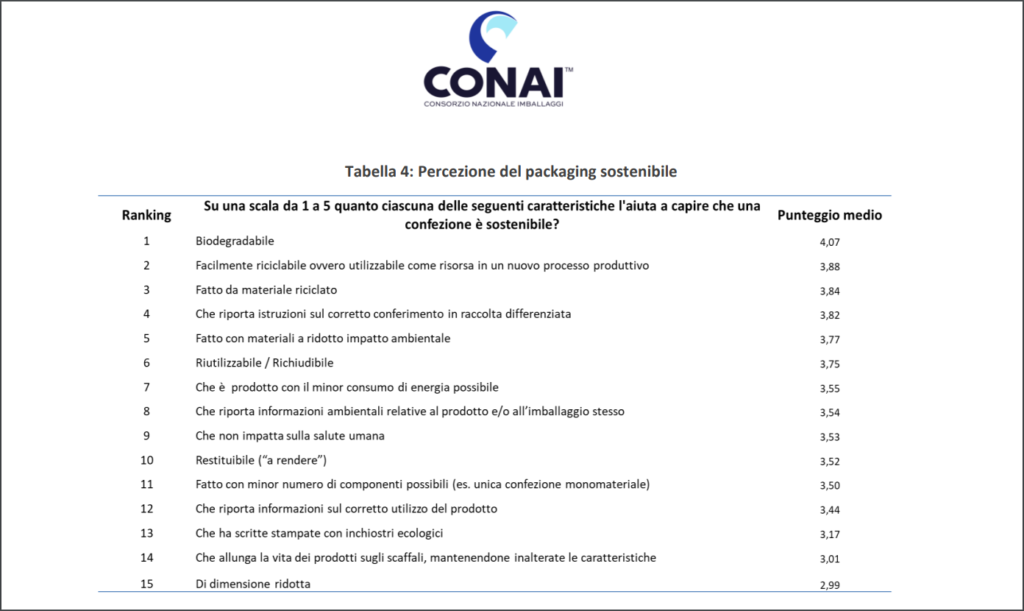Plastic free – Say no to plastic – Plastica? no grazie – No plastic species – Insieme per ridurre la plastica – Liberi dalla plastica – e se ne potrebbero aggiungerne tanti altri. Sono solo alcuni degli slogan usati nelle campagne di sensibilizzazione e nelle manifestazioni organizzate negli ultimi anni per contestare l’inquinamento derivante dall’uso della plastica.
Ma dietro questi proclami esiste davvero la consapevolezza di cosa significhi una vita senza plastica? Vi sono effettivamente comportamenti virtuosi legati alla sostituzione della plastica con altri materiali più sostenibili? Si è a conoscenza di cosa voglia dire “riciclabile” e “biodegradabile”? E soprattutto, si è davvero capaci di rinunciare agli stili di vita e ai modelli di consumo attuali?

The plastic we use
Without pretending to give answers to such complex questions, let us try to put in order data and reasoning on the subject, to try to reflect and perhaps highlight other controversial points.
One of these could be related, for example, to the exponential growth of foods sold in single-serving packages, a sign of a social trend characterized by smaller and smaller households and new consumption habits. But is it really true that the increase in single-serving packages, usually made of plastic, generates an increase in pollution? The answer is by no means obvious, quite the contrary. If we consider food waste, resulting from an excess of purchased or cooked food, a widespread and constant phenomenon, we have to assess its effects in terms of environmental impact:
- Waste of the resources used to produce it, namely energy, water, land;
- waste of fossil fuels, which are still widely used in the cultivation, farming, transportation and processing of food;
- Increased greenhouse effect as a result of landfill gases produced by food waste.
According to the Norwegian Institute of Food Nofima, food waste has far greater environmental repercussions than the disposal of packaging, especially if the packaging is made in a way that is part of the virtuous circle of the circular economy and if we take into account the optimization of functionality and the best possible use of resources that it enables. If we take into account the application of a smart design that maximizes the effectiveness of the packaging with respect to the use of the product, the reduction of thicknesses and thus the consequent reduction in volume of waste, the type of materials used, the durability and strength of the packaging, and all those aspects that make it recyclable packaging, then it can be highlighted how plastic becomes a sustainable solution.
On the other hand, if we look around carefully, we discover a huge variety of uses of plastics, related to their excellent workability, durability or, on the contrary, the need for individual use, lightness, transparency and impact resistance:
- thermoplastics and molds
- synthetic fibers that can be woven
- elastomers used for tires
- Semi-finished products in sheets, blocks, foils, strips for use in a variety of products
- Rigid and flexible pipes, insulating pieces,
- plastic packaging
- construction items such as doors, windows, shutters, plastic curtains, floor, wall and ceiling coverings, in roll and tile form, lighting fixtures
- containers and kitchen utensils
- toys and items for school
- office items
- gloves, syringes, bags, prostheses and various medical devices
The list will certainly not be exhaustive, but it manages to give a tangible idea of the importance and prevalence of plastic in everyone’s life. So, are we really able to replace plastic or give up the conveniences and functionality that this material offers? Or rather do we run the risk of simply shifting the cause of pollution from one resource to another? Perhaps the solution lies elsewhere and not in falsely environmentally friendly proposals such as the paper-bottle lined with PET to be impermeable to liquid and oxygen.
Consumers, however, are increasingly willing to make sustainability-driven choices so it is a matter of figuring out how to achieve a real environmental benefit.
It needs the commitment of everyone, of the plastic industries to develop objects and packaging that are truly recyclable or biodegradable, of politics that should be concerned with creating a legislative framework that guides toward circular economy models with sustainable cycles of use, of citizens who should become truly sensitive, not abandoning waste wherever they happen to be and sorting properly.





